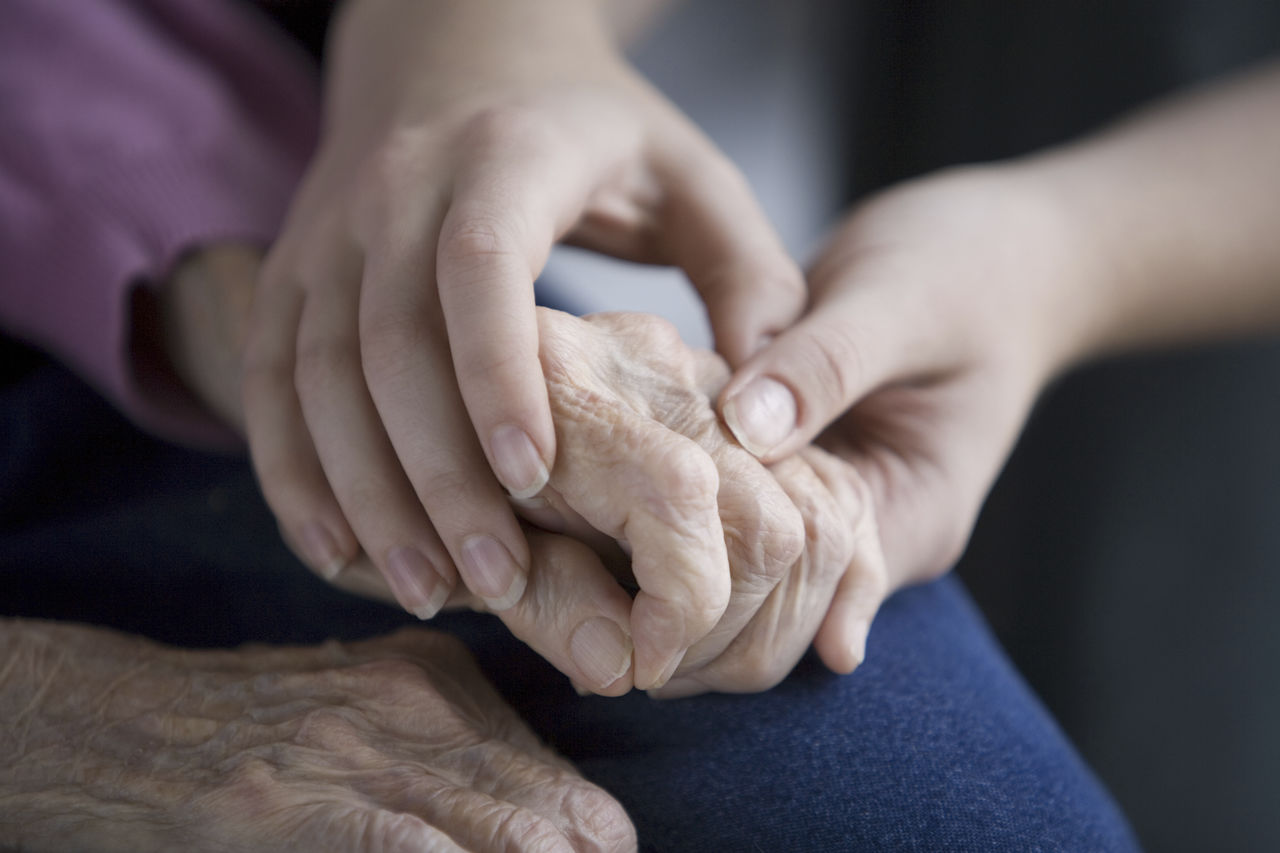AARP Hearing Center

AARP Ohio State Director Jenny Carlson understands the challenges family caregivers deal with—she has faced them herself.
During the COVID-19 pandemic, her 86-year-old mother was living alone, socially isolated and not doing well physically.
Carlson and her husband wanted to add an in-law suite onto their New Albany home so her mother could move in with the couple and their two children. But with supply chain disruptions, that became impossible, so they pivoted and bought an existing house nearby with a separate living space perfectly suited for her mother’s care.
“We moved [her] in with our family during the pandemic so we could create our own bubble and have more hands-on caregiving,” Carlson says. She adds that caring for her mother has deepened her commitment to advocate for policies that support older adults and their families.
More than 1 in 5 Ohioans age 45 and over currently provide unpaid care to an adult relative or friend, according to a recent AARP survey. The poll also found that 80 percent of people prefer receiving care at home with caregiver assistance as they age.
The 2024 Vital Voices survey polled 1,013 Ohio residents age 45-plus last summer, exploring their views on issues such as health care, financial security, caregiving and livable communities. Its findings will help guide AARP Ohio’s work across the state in 2025 and beyond, says Carlson, who took over as the organization’s state director in June of last year.
People want to stay in their homes as they age and to be able to get around independently, she says. “We want to make sure that we’re doing everything we can to support those goals,” she adds.
Caregiver resources
Among the caregivers who responded to the survey’s inquiry about the challenges of providing care to a loved one:
- 75 percent had used their own money for caregiving.
- 44 percent had made changes to their homes.
- 42 percent had had a hard time finding information or services they needed.
- 38 percent said they felt financially strained.
Carlson says supporting these caregivers can come in many forms—helping connect them to resources, encouraging employer flexibility so they can take time off for caregiving or advocating for increased funding for caregiver programs. Respite care and adult day services are especially important, she notes.
Ohio ranked 40th in the country for supply of adult day services on AARP's most recent long-term care scorecard, with 15 slots per 10,000 people age 65-plus in 2020-2021.
Many caregivers work full-time or still have children at home, making the role especially challenging, says Paula Smith, director of communications for the nonprofit Council on Aging of Southwestern Ohio.
The council’s caregiver support program experienced a 100 percent increase in the number of people served from 2020 through 2023, Smith says. The program pairs caregivers with nurses for one-on-one assistance, helping to reduce stress and boost their confidence and knowledge. The council also recently began offering overnight respite care based on demand.
“From our perspective, family caregivers really are the backbone of our long-term care system,” Smith says.
Housing options
The AARP Vital Voices survey also asked Ohioans 45-plus about their priorities when it comes to community livability, and the results show the importance of independent living is top of mind.
Being able to get where they need to go independently (88 percent), being able to continue to live at home as they get older (87 percent) and having affordable housing options in their communities (76 percent) were all priorities, the poll shows.
One way to address housing affordability is to make it easier to build accessory dwelling units, Carlson says. ADUs are small residences, such as an above-garage apartment, built on existing single-family home lots.
ADUs can create an affordable living option for older adults, allowing them to live independently while having family nearby for support. But local rules often prohibit them or make them difficult to build.
Some 78 percent of older Ohioans in the survey said they support town ordinances that allow ADUs, and 60 percent said they would consider building an ADU if they had the space.
To follow AARP Ohio’s efforts on affordable housing, caregiving and other key issues, go to aarp.org/oh. ■
Michelle Crouch is a North Carolina–based journalist who covers health care and consumer issues. She has written for the Bulletin for 10 years.
Also of Interest:
- What Are the Pros and Cons of Receiving Pay as a Family Caregiver?
- How to Find a Caregiver's Support Group That's Right for You
- How to Manage Sibling Relationships Strained by Family Caregiving































































